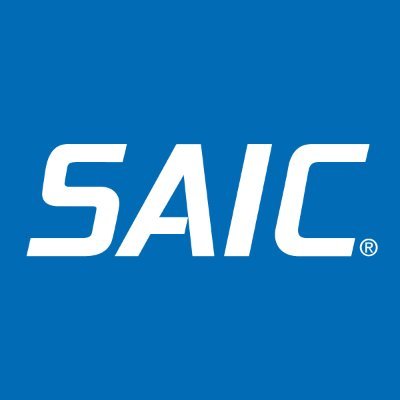
SAIC Product Designer (Engineering) Case Interview — Mission-Critical UX for Federal Programs
What this case covers at SAIC: A scenario-driven, whiteboard-style exercise where you design and communicate a user-centered solution for a mission-focused, regulated environment (defense/intelligence/civilian). Emphasis is on systems thinking, stakeholder alignment, accessibility (Section 508), USWDS use, and practicality within secure, bandwidth-constrained contexts that mirror SAIC programs. SAIC commonly uses multi-disciplinary panels and conversational deep-dives after an initial recruiter screen; overall interview difficulty trends medium and timelines are often about a week from first contact to decision, though program needs can vary. ([indeed.com](https://www.indeed.com/cmp/SAIC/interviews?utm_source=chatgpt.com), [glassdoor.com](https://www.glassdoor.com/Interview/SAIC-Interview-Questions-E41130.htm?utm_source=chatgpt.com)) Case prompt (given at start): "Design a role-based mission coordination dashboard for a federal operations center that field users and analysts can trust under low connectivity. The tool must comply with Section 508 and leverage USWDS components. Assume some users operate in air-gapped or classified environments; export/printing is restricted; ATO is pending." (SAIC mission-integrator context and federal UX constraints are typical across its portfolio; many SAIC design roles intersect with clearance-bound programs.) ([saic.com](https://www.saic.com/?utm_source=chatgpt.com)) Structure and timing (75 minutes): - 0–5 min: Brief from panel (Hiring Manager/Product Owner, Systems Engineer, Design Lead). Panel clarifies customer mission and success criteria typical of SAIC engagements. ([saic.com](https://www.saic.com/?utm_source=chatgpt.com)) - 5–10 min: Your clarifying questions; identify users, environments (classified/unclassified), constraints (ATO, data sensitivities), and integration points. - 10–35 min: Working session. Produce: (1) problem statement and success metrics; (2) prioritized user flows; (3) low-fidelity wireframes for 2–3 critical screens; (4) risks/trade-offs and assumptions; (5) how you’ll meet Section 508 and apply USWDS components (color contrast, focus order, keyboard, error handling). ([section508.gov](https://www.section508.gov/develop/accessible-design-using-uswds/?utm_source=chatgpt.com), [designsystem.digital.gov](https://designsystem.digital.gov/documentation/accessibility/?utm_source=chatgpt.com)) - 35–55 min: Stakeholder role-play Q&A (PM asks about scope/roadmap; Systems Engineer probes data and identity flows; Cyber/IA challenges auth/logging; Design Lead asks research and testing plans under constraints). - 55–70 min: 5–7 minute readout; defend trade-offs; outline handoff (definitions of done, acceptance criteria, analytics); propose a minimal test plan for a secure environment. - 70–75 min: Debrief and next steps (portfolio pointers to similar work; how you’d iterate in sprint 1–2). Materials provided: 1–2 lightweight personas (Analyst, Duty Officer), a redacted legacy screen, policy constraints (no PII export, audit logging), and a USWDS component sheet. Accessibility and inclusive design expectations are explicit for federal services. ([designsystem.digital.gov](https://designsystem.digital.gov/patterns/inclusive-design/?utm_source=chatgpt.com), [section508.gov](https://www.section508.gov/develop/accessible-design-using-uswds/?utm_source=chatgpt.com)) Evaluation rubric (scored 1–5 each): - Mission alignment and stakeholder collaboration — shows you can partner with PM/SE/cyber in a mission-first culture. ([saic.com](https://www.saic.com/?utm_source=chatgpt.com)) - Human-centered design under constraints — correct application of Section 508/WCAG and USWDS patterns with rationale. ([section508.gov](https://www.section508.gov/develop/accessible-design-using-uswds/?utm_source=chatgpt.com), [designsystem.digital.gov](https://designsystem.digital.gov/documentation/accessibility/?utm_source=chatgpt.com)) - Systems thinking and trade-offs — clear assumptions, dependency mapping, and risk handling for secure, low-connectivity contexts. - Communication and client readiness — crisp storytelling, plain-language rationale suitable for government stakeholders; panel-style Q&A aligns with SAIC interviews. ([boards.core77.com](https://boards.core77.com/t/saic-portfolio-interview-how-to-dress/26395?utm_source=chatgpt.com)) - Practicality and handoff — backlog-ready user stories/acceptance criteria, measurable success metrics, and feasibility within compliance and ATO paths. SAIC-specific notes to expect: Portfolio discussion is common and some designer roles require active clearances (e.g., TS/SCI with poly); many postings call out portfolio submission prior to interview and familiarity with Agile delivery for government. Incorporate these realities into your approach and artifacts. ([jobs.saic.com](https://jobs.saic.com/jobs/13956185-ux-slash-ui-web-designer?utm_source=chatgpt.com), [clearedcareers.com](https://clearedcareers.com/job/679664/ux-ui-web-designer/?utm_source=chatgpt.com), [builtin.com](https://builtin.com/job/uiux-software-engineer/2845671?utm_source=chatgpt.com))
75 minutes
Practice with our AI-powered interview system to improve your skills.
About This Interview
Interview Type
PRODUCT SENSE
Difficulty Level
3/5
Interview Tips
• Research the company thoroughly
• Practice common questions
• Prepare your STAR method responses
• Dress appropriately for the role